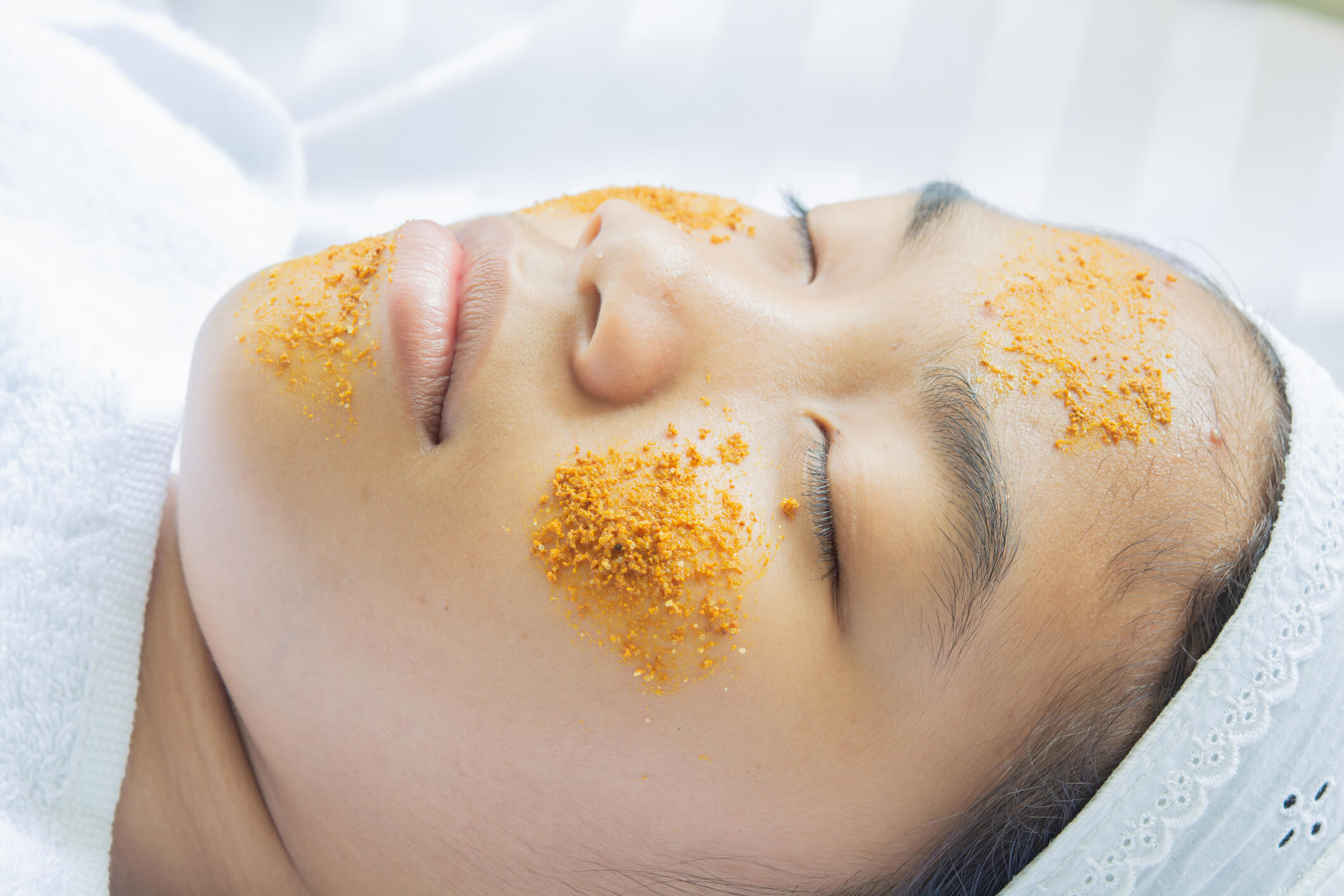5 Ways Turmeric is Good for Your Skin
Most people recognize turmeric as a delicious spice, and many others know it as a popular health supplement. But did you also know that turmeric can be a transformative part of your skincare routine?
A staple in Ayurvedic medicine, turmeric has been used for centuries because of its potential benefits for health and wellness. The root contains many vitamins, nutrients and healthy compounds, including protein, fiber, iron and potassium. Perhaps its most notable quality, however, is curcumin—turmeric’s active ingredient that has demonstrated powerful anti-inflammatory, anti-microbial and antioxidant results.
Because of these things, turmeric is not solely good for boosting your immunity and reducing internal inflammation. When used correctly, it can also have many benefits for your skin.
Here are the top five benefits turmeric has when used for skin care.
- Calms acne: Turmeric is a great remedy for pimples and breakouts thanks to a combination of its effects. First, turmeric is known for being anti-inflammatory. This can help soothe the redness and inflammation of active breakouts, reducing their appearance. Second, turmeric has antibacterial properties that can help fight harmful bacteria trapped under the skin, clearing clogged pores and busting breakouts fast.
- Soothes eczema: Inflammatory conditions like eczema and psoriasis can affect the skin on your face and around the body. Thanks to its anti-inflammatory effects, turmeric may be useful in soothing these conditions, relieving the itchiness, scaliness and redness that make you uncomfortable.
- Lightens discoloration: If your skin is discolored because of sunspots, acne scars or hyperpigmentation, turmeric might be able to lighten it and promote the regeneration of healthy, supple skin. After helping to lighten discoloration, turmeric can leave your skin looking brighter and full of a natural glow.
- Anti-aging effects: Turmeric is believed to have some benefits in the realm of anti-aging, particularly with shielding cells and reversing signs of sun damage, wrinkles and sagging skin. Its antioxidants are likely responsible for sun damage repair because they fight free radicals responsible for cell damage. Some experts also believe turmeric can prevent the breakdown of collagen to keep skin plump and healthy for longer.
- Scalp care: The skin of your scalp should not be forgotten, either! Advocates of turmeric say that the spice is great for soothing scalp problems like flakiness. Not only is powdered turmeric a great natural exfoliator, but it can also soothe inflammation caused by dandruff and dryness.
How to use turmeric for skin benefits
It’s clear that turmeric can have powerful and lasting effects on your skin. But you might be wondering what the best way to reap these benefits is—should you apply it topically or focus on ingesting it?
Really, the answer is both. Ingesting turmeric—whether in the form of supplements, smoothies, turmeric teas or your favorite Indian dishes—allows your body to break down its many components and use them from head to toe. This might provide some skin benefits, in addition to the many other health benefits turmeric might offer.
However, if you’re looking to use turmeric to target a specific skin problem or two, it might be best to apply it topically. There are lots of specially formulated skincare products that include turmeric on their ingredients list you can buy. But you can also create simple at-home treatments using the turmeric you have in your cabinet along with a few other household items.
Whether you’re interested in fighting signs of aging, reducing discoloration or soothing dry, irritated skin, a turmeric face mask can help. You can whip one up easily by combining a small amount of turmeric in a bowl with honey and a dash of plain Greek yogurt or milk. Apply it evenly across your skin, let it sit for 10-15 minutes, then rinse off.
If you only want to target specific areas of your skin, such as blemishes, you can make a paste by combining turmeric with a little water or coconut oil, then applying it sparingly. Allowing turmeric to be absorbed by the skin can help soothe those issues that affect the outermost layers.
One thing to remember is that, because of its bright yellow-orange color, turmeric has the potential to temporarily stain the skin if it’s left on too long. Some people also have sensitive skin that reacts strongly to turmeric. It’s a good idea to try any mask or paste out on the back of your hand first to ensure you won’t have a reaction.
Good for the body, good for the skin
Turmeric’s healthy properties offer a lot to our bodies, both inside and out. Explore the applications of turmeric you like the most to experience both beauty and wellness benefits!



Leave a comment